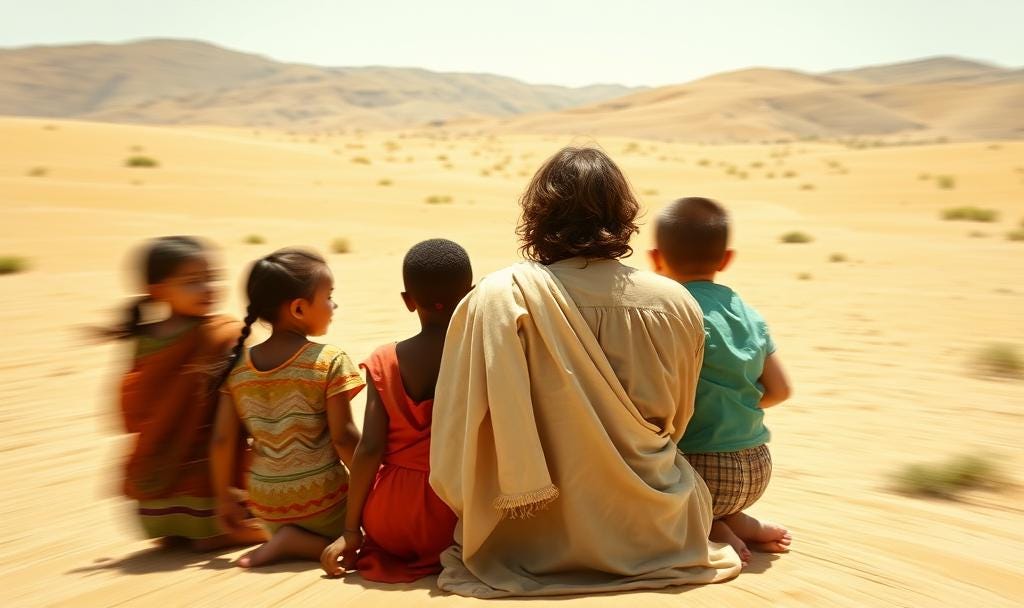Who is Christ in “A Course in Miracles”?
Connecting with our authentic and fundamental identity
Last week’s post discussed the Holy Spirit, the third person in the trinity, and, in A Course in Miracles, the communication link between us and God. This week’s post takes up a discussion on Christ and an exploration of how the Course employs this term, how it illuminates a productive metaphysical orientation, and what it suggests about ourselves and our spiritual practice.
Traditional Christian perspectives liken the concept of Christ to the divine aspect of Jesus. Whereas Jesus denotes the human man who lived more than 2000 years ago, Christ draws attention to His spiritual and divine nature. Christ is the centering, acknowledgment, and reverence for Jesus’s identity as the son of God.
It is His heavenly, celestial, otherworldly self. In Jesus, our shared humanity and experiences are expressed. In Christ is our aspiration to live our lives more fully as He lived and to shed our egos, our errors, the hate in our hearts, our selfishness, and the resentments we hold. In Jesus, we find our brother, and in Christ, we find our king.
A Course in Miracles provides a different lens on the concept of Christ. Whereas traditional Christianity limits the identity of Christ as that which pertains to the historical figure of Jesus, the Course suggests that this is the identity we all share.
In fact, “Christ” denoting “son of God”, is our ultimate and only identity. Thus, Jesus is the son of God as well as all of us in our truth and as God created us.
It is worth keeping in mind that the Course employs language (which is limited) as the communicative means to describe and discuss metaphysical topics and explanations.
As such, language is being used to explore and communicate something that is far greater and beyond the scope of language. Indeed, it is far beyond the scope of the human brain and our intellectual capacities grasp the fullness of what the Course draws our attention to.
The Course likens God as a mind and we are the thought of God. God is the father (i.e., the mind), and we are His son (i.e., His thought). God extends Himself through his thought (i.e., us). There is no point where this extension begins or ends. However, God created us, but we did not create God.
Christ is the extension of God. We are this extension existing in everlasting joy, peace, and oneness with God. Despite how we view ourselves as human beings and our terrestrial existence, our metaphysical reality is oneness with each other and with God.
There is only one begotten son of God, there is one sonship.
Part two of the Workbook delves into a reflection addressing who Christ is.
Christ is the part of ourselves that is at peace and in onesness with God. It is irrevicable and immutable. We cannot change it, we cannot discard it. We can fool ourselves into thinking we are something other than what God created us to be. But we can never destroy this reality. It is always there.
We tap into and align ourselves with our true self (Christ) when we forgive. We align ourselves with Christ when we do good and when we choose to think as God would have us think.
When we let go of our egos and our need to control, to manipulate, to judge and condemn, we lean into Christ, we solicit the miracle, and we make contact with our spiritual and ontological foundation.
Thus, Christ is the identity we share with Jesus and with each other. We are all part of the sonship. We are all the child of God, the extension of God, created in His image.
This may beg the question among some, “If all of us are the Christ, what is the difference between Jesus and us? Why is He remembered for the enactment of divinity in His humanity if all of us possess this same divinity within?”
This is addressed early in the Course Text in chapter 1 wherein the voice is recognized by Course students as Jesus’.
He explicitly states that He only possesses and holds onto that which is of God and aligns with God. His thoughts and by extension His actions are devoid of the ego. Whereas for us, however, we continue to work to dismantle and remove the ego.
His demonstration of love and living a life of love on Earth is possible (potential) in all of us. He does not have anything we do not have. We, however, bear blocks to our awareness of love and oneness that cloud over our truth and the potential Jesus exemplified in His words and actions.
The more fully we can claim our identity as Christ and look upon the world as God looks upon us, the more fully we can embody and demonstrate the example that Jesus offered us.
Please share this post with your social media networks and leave your comments below!
Thanks everyone and have a great week.







This "Who is...?" series is very useful. It shows us where we fit, where we are, Who WE Are, in Creation. I find it useful in praying as in the Song of Prayer...JOINING with the love and joy of the Christ and through the Christ to the Father and hearing the Father's Voice when I need practical, terrestrial help. The Song of Prayer says prayer, at whatever level, finds it's answer at the level it is prayed/understood, so I guess it goes where it needs to go, and names aren't important, but it was bugging me whose name to call.
This is helpful. I recently started on the Course and I am having a hard time with the wording in the first section. I am taking my time with the Lessons, yesterday I did Lesson 7 for a second time because I wasn't understanding it.